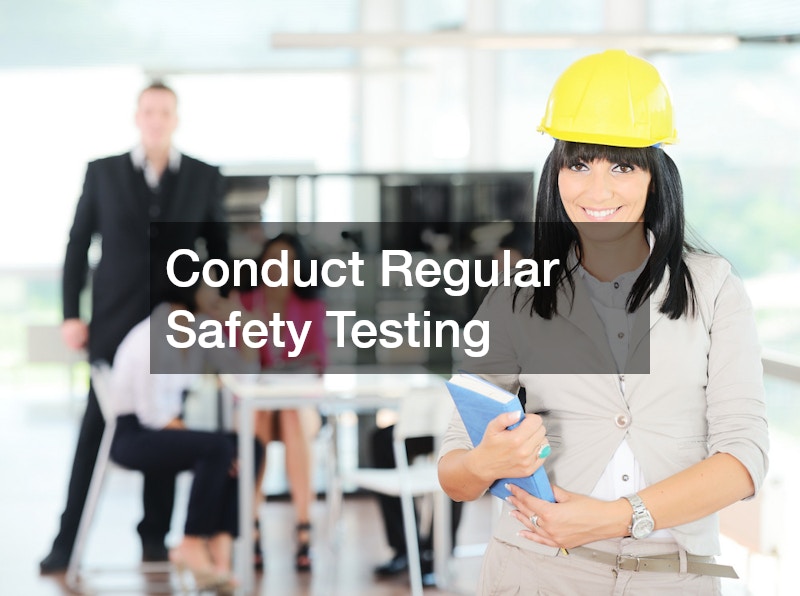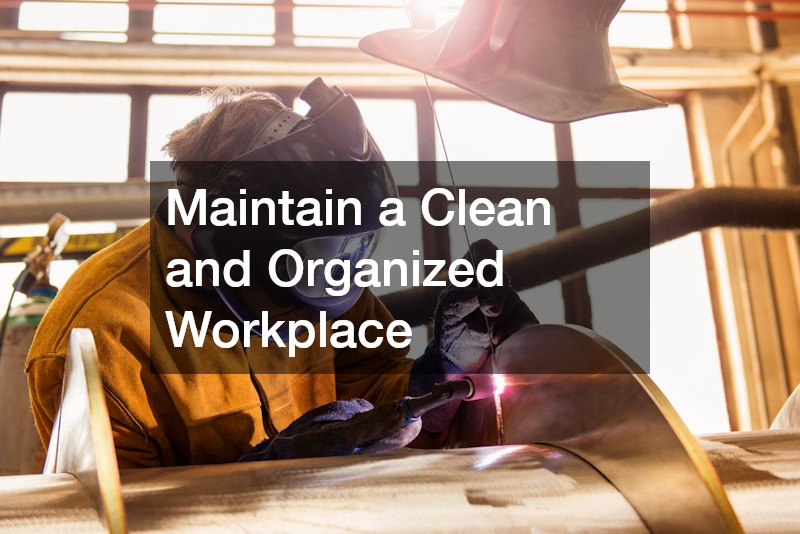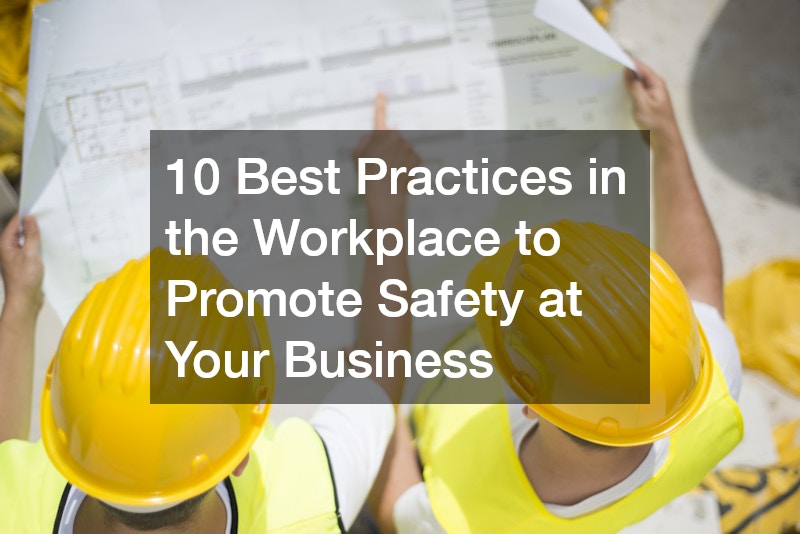Creating a safe and efficient workplace is paramount in any industry as it not only promotes the well-being of employees but also enhances productivity and reduces costly delays. Employing best practices in the workplace, employers can foster an environment that not only complies with safety standards but also empowers employees to perform at their best. Unfortunately, work-related accidents can occur, leading to potential legal implications such as those handled by a construction accidents law firm. By integrating comprehensive safety measures, companies can significantly minimize risks while ensuring compliance with occupational safety regulations.
This article explores various strategies that companies can implement to maintain a safe working environment and comply with safety standards. With insights into everything from safety testing to implementing safety policies and providing protective equipment, it offers valuable perspectives for maintaining workplace safety. We’re not only focusing on physical safety but also exploring how clear communication and incident reporting systems can further enhance these efforts. Whether you’re managing a commercial HVAC company, a window replacement company, or any other business, these practices hold true across industries.
Utilizing instances from industries such as tree service company operations and roof replacement company procedures, this guide offers a detailed account of how safety measures can be an integral part of ordinary business operations. For personal injury law and personal injury law firm representatives, understanding these practices ensures better preparation for potential claims. Let’s delve into each of these essential practices and explore how they can be implemented effectively in your workplace.
1. Conduct Regular Safety Testing

Conducting regular safety tests is crucial for identifying potential hazards before they result in serious incidents. These tests can vary greatly depending on the nature of the business but serve a universal purpose: ensuring a safe work environment. For instance, those working with heavy machinery, such as in a manufacturing plant, will benefit from routine inspections that identify wear-and-tear before it becomes problematic.
Partnering with a skilled construction accidents law firm can provide insights into regulations and common pitfalls that companies might face. Regular safety testing can prevent costly and dangerous accidents, reinforcing the importance of best practices in the workplace. This proactive approach not only saves time and resources but also builds a culture of safety among employees who become more aware of the risks.
Moreover, involving employees in the safety testing process empowers them by showing they too are responsible for their own safety as well as that of their colleagues. Employees who are trained in properly identifying and responding to potential hazards can act as an additional line of defense. Regular testing supported by comprehensive training creates an informed and vigilant workforce that operates under the assurance of safety.
2. Implement Clear Safety Policies
Clear and comprehensive safety policies are the cornerstone of maintaining a safe working environment. Workers comp attorneys often highlight that well-drafted and communicated safety policies can prevent workplace liabilities. By clearly delineating safety protocols, rules, and the roles and responsibilities of each worker, companies establish a framework in which all employees understand their duties and the expectations placed upon them.
The involvement of a workers comp lawyer during the drafting of these policies ensures they meet legal standards and cover potential safety gaps. Well-defined policies are not static; they require regular updates to remain effective in evolving workplaces. These policies are not just about compliance; they also signal to employees that their safety is a genuine priority, which can boost morale and productivity.
Employers must also ensure that all employees receive adequate training and resources related to the safety policies. Providing manuals, conducting workshops, and using digital platforms to disseminate information guarantees that every employee stays informed. By fostering a deep understanding of safety protocols, companies can cultivate a culture driven by best practices in the workplace.
3. Provide Personal Protective Equipment
Personal protective equipment (PPE) is non-negotiable when it comes to minimizing the risk of injury in the workplace. Whether it’s a construction site or a manufacturing plant, proper PPE like helmets, gloves, and goggles are essential safety tools. Companies that proactively supply PPE and offer training on its appropriate use can significantly reduce workplace injuries.
While costs involved in procuring PPE are sometimes seen as a burden, they are a minor investment compared to the expenses associated with workplace accidents and ensuing legal battles, as suggested by workers comp lawyers. Ensuring that all employees have access to high-quality and suitable PPE reinforces a company’s commitment to best practices in the workplace.
In addition to providing PPE, companies must also enforce its correct usage. Regular checks and audits should be instituted to ensure compliance. Employee feedback on PPE’s effectiveness can offer valuable insights, leading to continuous improvement in safety measures and equipment appropriateness, a trend well-supported by many personal injury law experts.
4. Maintain a Clean and Organized Workplace

A clutter-free work environment plays a vital role in promoting safety and efficiency. A disorganized workplace not only increases the risk of accidents but also hampers productivity. For industries heavily reliant on machinery, such as a personal injury law firm, maintaining a clean and hazard-free environment can prevent accidents and reduce the potential for injurious events.
A systematic cleaning and organization routine contributes to overall operational efficiency, allowing employees to work in a safe environment while focusing on their tasks. Implementing best practices in the workplace highlights the importance of tidiness as a fundamental aspect of safety. A clean work environment also creates a sense of pride and responsibility among workers, motivating them to maintain the standards set by the company.
Besides daily cleaning, periodic audits conducted by team leaders or safety officers can identify areas requiring attention. Employee involvement in these cleaning campaigns not only increases awareness of potential hazards but also cultivates a team-oriented approach to workplace safety. Ensuring tools and materials are stored correctly reduces the risk of accidents and promotes a safety-first culture.
5. Ensure Proper Equipment Maintenance
Equipment maintenance is an integral part of workplace safety that cannot be overlooked. Many companies, including personal injury law firms, rely on specific machinery, making regular checks and repairs important to prevent accidents. By adhering to a rigorous maintenance schedule, the risk of machinery malfunction or breakdown can be remarkably minimized.
Regular training for employees who operate or maintain equipment is essential. Understanding how to detect early signs of machinery stress or failure is not only a necessary skill but also an exercise in promoting best practices in the workplace. It empowers employees to take a proactive role in maintaining workplace safety.
Engaging with a reputable personal injury law firm can provide additional insights into maintaining necessary legal compliance. They can offer guidance on both routine and emergency maintenance scenarios. Companies can avoid severe consequences, such as prolonged downtime and injury claims, by prioritizing equipment maintenance as an ongoing operational focus.
6. Install Proper Signage
Custom signage serves an essential function in the workplace, guiding employees, visitors, and contractors in navigating potential hazards. Clear and prominent placement of safety signs enhances awareness and instructs individuals on proper procedures in various situations. From emergency exit signs to warnings about machinery, signage is a crucial component in maintaining workplace safety.
Signage needs to be visible, concise, and compliant with safety standards to serve its purpose effectively. Poorly installed or absent signage can lead to accidents that could have been easily prevented. Companies should regularly inspect and update their signs to ensure they remain relevant and comprehensible, thus championing best practices in the workplace.
Including employees in the process of assessing and updating signage can offer new perspectives and foster a shared commitment to safety. Consider working with custom signage professionals to ensure that signs meet regulatory requirements while conveying the necessary information effectively. These efforts demonstrate a company’s dedication to a secure and informed workplace environment.
7. Encourage Open Communication

Open communication is the backbone of a well-functioning workplace where safety concerns can be addressed promptly. Companies must establish channels that allow employees to report potential hazards or share ideas for improvement without fear of reprisal. A roof replacement company stands to benefit greatly from an environment where team members freely share observations on site safety.
Establishing clear communication lines contributes to employees’ trust and involvement in maintaining workplace safety standards. Encouraging best practices in the workplace starts with fostering a transparent communication culture. Employees who feel heard are more likely to engage proactively with management and peers about safety issues.
Regular meetings and feedback sessions help reinforce the importance of communication in safety matters. Whether through digital platforms, physical suggestion boxes, or regular team sessions, ensuring everyone’s voice can be heard equally is vital. This openness can lead to practical solutions and innovations in workplace safety, enhancing overall productivity and morale.
8. Establish an Incident Reporting System
An effective incident reporting system is instrumental in identifying and mitigating potential hazards in the workplace. By promptly documenting every incident, whether minor or significant, companies can analyze patterns that may predict more serious events. A window replacement company, for instance, could benefit from a streamlined incident reporting protocol to address project-specific safety concerns.
This system not only helps in monitoring workplace safety trends but also serves as a critical tool for assessing and refining safety strategies. A comprehensive reporting mechanism demonstrates the importance of accountability in adhering to best practices in the workplace. When employees know the process and understand how incidents are reviewed and addressed, their participation in safety culture is strengthened.
Training all staff on how to use the reporting system effectively ensures consistency and reliability in the data collected. Analysis of incident reports can lead to actionable insights, reducing the likelihood of repeated accidents. This information can also guide policy revisions and influence training sessions to address identified safety gaps.
9. Enforce Break and Rest Periods
Adequate rest is an often overlooked component of safety and productivity in the workplace. Ensuring employees receive appropriate breaks reduces fatigue-related errors that could lead to accidents, particularly in labor-intensive roles like those of a tree service company. Instituting scheduled rest periods is not only beneficial for physical health but also enhances mental alertness and performance.
Adopting best practices in the workplace means recognizing that overworked employees are more likely to encounter accidents and health issues. Companies should adhere to or exceed legal requirements for break times, promoting a healthy work-life balance. Employers who prioritize employee well-being establish a workforce that is more engaged, productive, and committed to maintaining safety protocols.
Proper documentation of rest periods can also play a pivotal role in legal compliance and defending against false claims. Employees should be encouraged to take their breaks fully, with managers leading by example. Supporting a structured rest environment reaffirms a company’s commitment to both safety and employee well-being.
10. Monitor Ergonomics

Ergonomics is an essential element in ensuring employees do not suffer from strain or injury related to their working posture or movements. Companies, including those in the industrial sector like a commercial HVAC company, must prioritize ergonomic assessments to prevent musculoskeletal disorders. Ensuring workstations and tools are ergonomically sound significantly contributes to reducing employee discomfort and injury rates.
Implementing ergonomic best practices in the workplace can lead to reduced absenteeism and increased worker satisfaction. Regular evaluations and employee feedback are necessary to tailor the ergonomics of job roles effectively. By engaging experts to assess and implement ergonomic measures, companies showcase their dedication to long-term employee health.
Comprehensive training on ergonomic principles further empowers employees to adjust their environments and practices. Such initiatives highlight the company’s commitment to safety while equipping employees with the knowledge to protect themselves. Ultimately, prioritizing ergonomics fosters a safer, happier, and more productive workforce.
In conclusion, prioritizing safety and efficiency in the workplace requires a multifaceted approach that integrates clear policies, open communication, continuous training, and the strategic implementation of safety measures. Enabling these best practices in the workplace not only reduces potential liabilities but also enhances employee well-being and productivity. Through regular safety testing, providing proper equipment and training, and fostering an inclusive safety culture, businesses can achieve a safer and more efficient work environment.
Beyond simple compliance, these practices reflect a company’s commitment to its employees’ health and safety, proving its status as a responsible and forward-thinking employer. In industries ranging from personal injury law firms to tree service companies, there are specific strategies that align with industry needs while maintaining overarching safety principles. Legal guidance from specialists like construction accidents law firms and custom signage providers further solidifies these strategies.
By implementing these comprehensive safety measures, employers not only strive to prevent accidents but also build a workplace culture grounded in mutual respect and care. Ultimately, investing in workplace safety is an investment in the company’s future, cultivating a positive environment where both employees and the business can thrive. Embracing these safety best practices signifies a commitment to operational excellence and enduring success.

